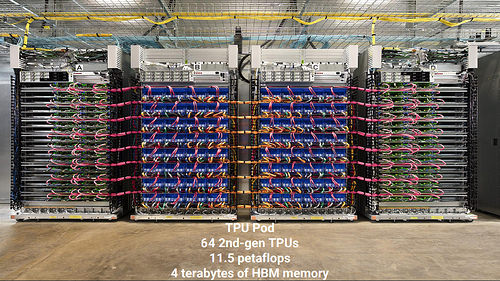The email sent will contain a link to this article, the article title, and an article excerpt (if available). For security reasons, your IP address will also be included in the sent email.
Hey, wake up, it's HighScalability time:

Merry Christmas and Happy New Year everyone! I'll be off until the new year. Here's hoping all your gifts were selected using machine learning.
If you like this sort of Stuff then please support me on Patreon. And I'd appreciate your recommending my new book—Explain the Cloud Like I'm 10—to anyone who needs to understand the cloud (who doesn't?). I think they'll like it. Now with twice the brightness and new chapters on Netflix and Cloud Computing.
- 157 terabytes: per second raw data output of the Square Kilometre Array; $11 million: made by a 6 year old on YouTube; 14TB: helium hard drive; 1: year education raises IQ 1-5 points; 10: seconds mining time to pay for wifi; 110 TFLOPS: Nvidia Launches $3,000 Titan V; 400: lines of JavaScript injected by Comcast; 20 million: requests per second processed by Netflix to personalize artwork; 270: configuration parameters in postgresql.conf; hundreds: eyes in scallop from a unique mirroring system; $72 billion: record DRAM revenue; 20: rockets landed by SpaceX;
- Quotable Quotes:
- Bill Walton: Mirai was originally developed to help them corner the Minecraft market, but then they realized what a powerful tool they built. Then it just became a challenge for them to make it as large as possible.
- Stephen Andriole: The entire world of big software design, development, deployment and support is dead. Customers know it, big software vendors know it and next generation software architects know it. The implications are far-reaching and likely permanent. Business requirements, governance, cloud delivery and architecture are the assassins of old "big" software and the liberators of new "small" software. In 20 years very few of us will recognize the software architectures of the 20th century or how software in the cloud enables ever-changing business requirements.
- Melanie Johnston-Hollitt: There is not yet compute available that can process the data we want to collect and use to understand the universe.
- Brandon Liverence: Credit and debit card transaction data shows, at these businesses, the average customer in the top 20 percent spent 8x as much as the average customer from the bottom 80 percent.
- @evonbuelow: After looking at the source code for a series of k8s components & operators, I'm struck by how go (#golang) is used more as a declarative construct than a set of procedural steps encoding sophisticated logic.
- apandhi: I had a run-in with CoinHive this weekend so I did a bit of research. Most modern computers can do about 30/h a second. Coinhive currently pays out 0.00009030 XMR ($0.02 USD) per 1M hashes. For a 10 second pause, they'd mine 300 hashes (about $0.000006 USD). To make $1 USD, they'd need to have ~166,666.66 people connect to their in store WIFI.
- @matt_healy: Went from zero clue about #aws codepipeline and friends yesterday, to setting up an automatic Lambda and API gateway deployment with every git push in production today. Awesome!
- lgierth: Pubsub is probably one of the lesser known features of IPFS right now, given that it's still marked as experimental. We're researching more efficient tree-forming and message routing algorithms, but generally the interface is pretty stable by now. Pubsub is supported in both go-ipfs and js-ipfs. A shining example of pubsub in use is PeerPad, a collaborative text editor exchanging CRDTs over IPFS/Pubsub
- Manish Rai Jain: Given these advancements, Amazon Neptune’s design is pre-2000. Single server vertically scaled, asynchronously replicated, lack of transactions — all this screams outdated.
- There are more quotes. So many more. More. More. More. Yep, there's even more.
Don't miss all that the Internet has to say on Scalability, click below and become eventually consistent with all scalability knowledge (which means this post has many more items to read so please keep on reading)...














 Return to Article
Return to Article